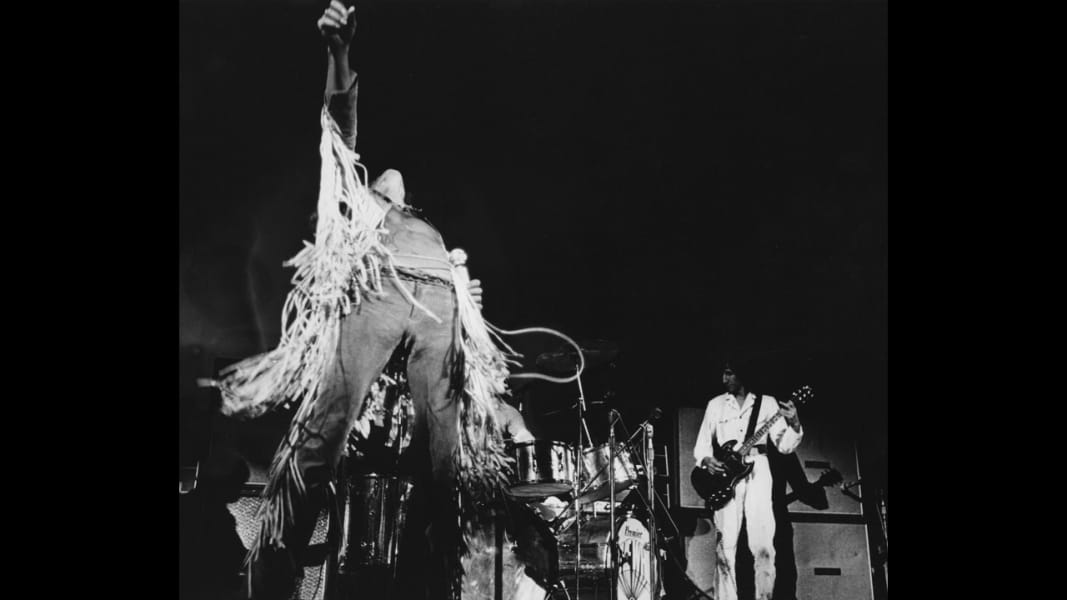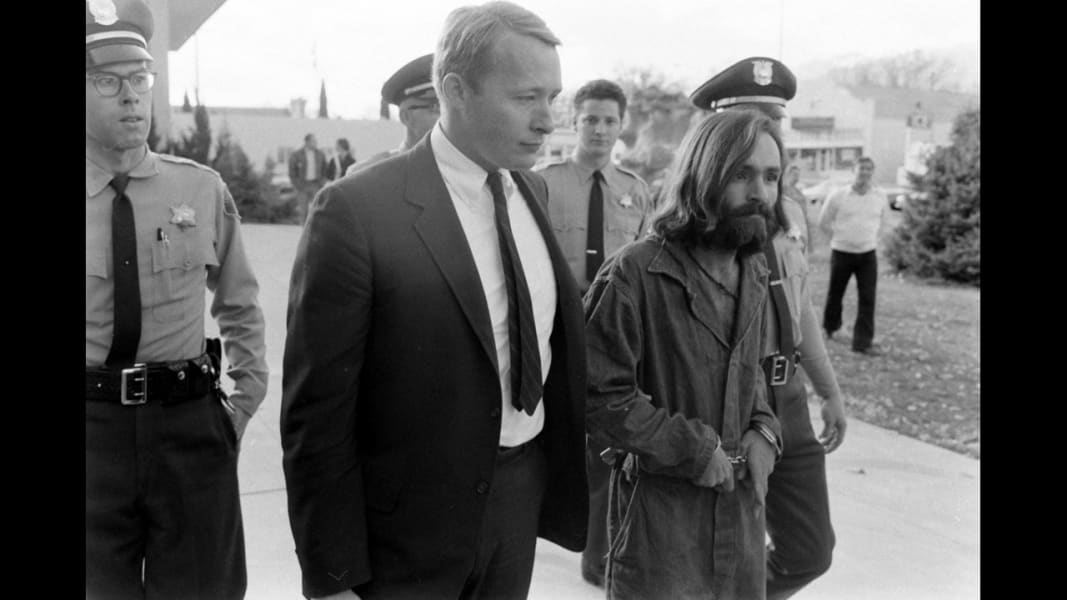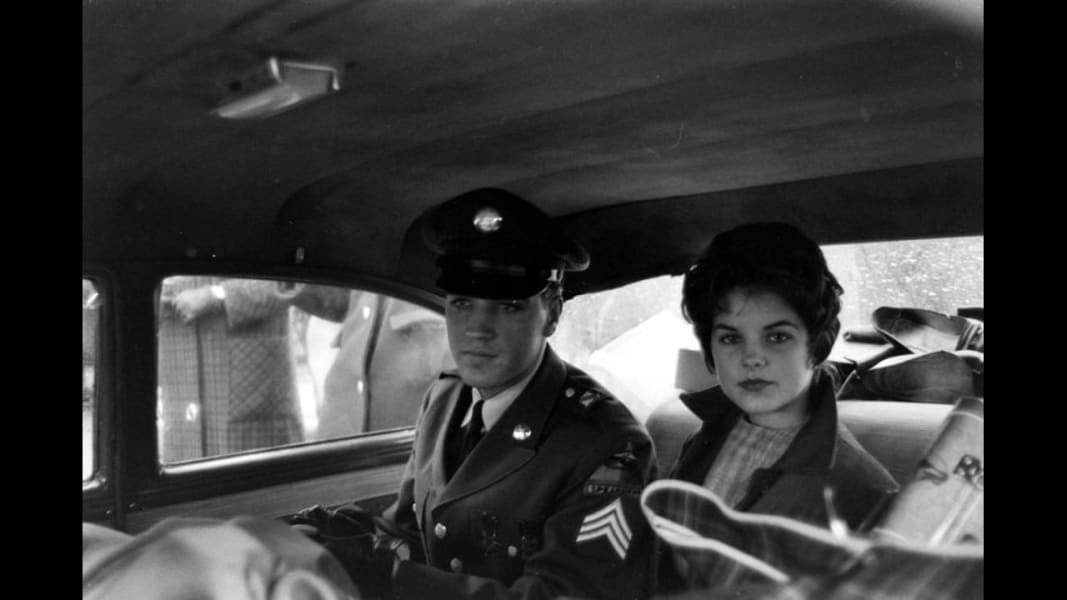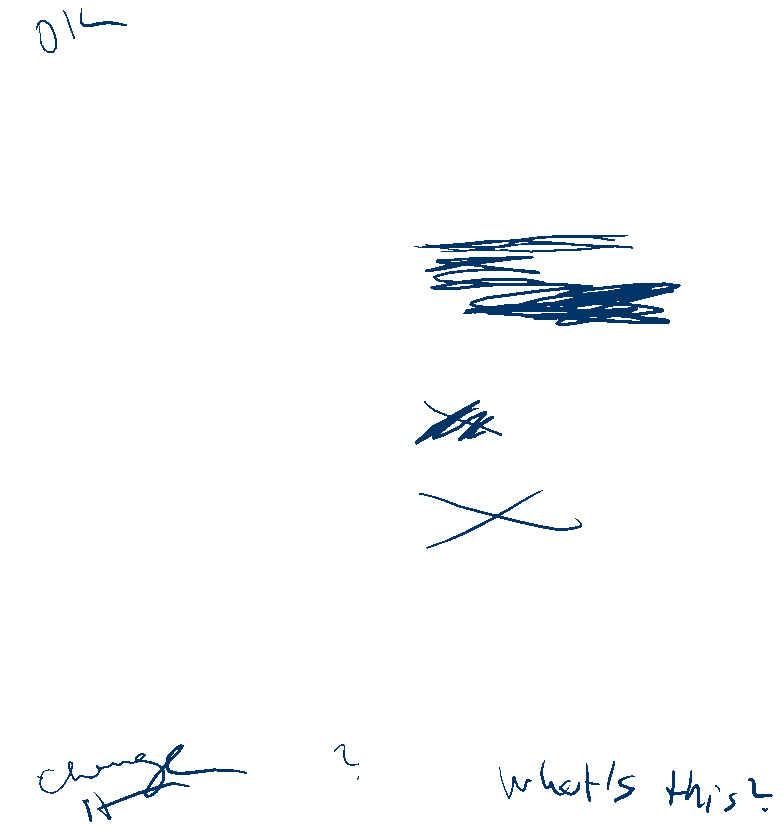Share


1 of 61
Sex, drugs and rock 'n' roll defined the 1960s. But the decade was also a time of pivotal change — politically, socially and technologically. Check out 60 of the most iconic moments of the decade. Rolls Press/Popperfoto/Getty Images
On February 1, 1960, four African-American college students made history just by sitting down at a whites-only lunch counter at a Woolworth's in Greensboro, North Carolina. Service never came for the "Greensboro Four," as they came to be known, and their peaceful demonstration drew national attention and sparked more "sit-ins" in Southern cities. Donald Uhrbrock/Time Life Pictures/Getty Images
Elvis Presley's musical heyday was in the 1950s, but he remained a major star in the 1960s. Here, Presley, 25, is pictured with his future wife, Priscilla, shortly before his discharge from the U.S. Army in 1960. Presley served two years in the Army. James Whitmore/Time & Life Pictures/Getty Images
Wounded people in South Africa's Sharpeville township lie in the street on March 21, 1960, after police opened fire on black demonstrators marching against the country's segregation system known as apartheid. At least 180 black Africans, most of them women and children, were injured and 69 were killed in the Sharpeville massacre that signaled the start of armed resistance against apartheid. OFF/AFP/Getty Images
Theodore Maiman pours liquid nitrogen into a cooling unit around one of the first experimental lasers in his laboratory in Santa Monica, California. Maiman's ruby laser, created on May 16, 1960, is considered to be one of the top technological achievements of the 20th century. It paved the way for fiber-optic communications, CDs, DVDs and sight-restoring surgery. ap
On June 23, 1960, the U.S. Food and Drug Administration approved Enovid, the first birth-control pill for women. Art Rickerby/Time Life Pictures/Getty Images
The first televised presidential debate was on September 26, 1960, and it involved U.S. Vice President Richard Nixon, left, and Sen. John F. Kennedy of Massachusetts. The debate is largely credited with helping to make a star out of Kennedy, who won the election later that year. HULTON ARCHIVE/Getty Images
Cuban leader Fidel Castro, lower right, sits inside a tank near Playa Giron, Cuba, during the Bay of Pigs invasion on April 17, 1961. On that day, about 1,500 CIA-backed Cuban exiles landed at Cuba's Bay of Pigs in hopes of triggering an uprising against Castro. It was a complete disaster for President John F. Kennedy's fledgling administration. Raul Corrales/granma/ap photo
Helen Gurley Brown, editor of Cosmopolitan magazine, published her book "Sex and the Single Girl" in 1962. The book helped spark the sexual revolution and popularize the notion that the modern woman could "have it all," including a successful career and a fulfilling sex life. Santi Visalli/Getty Images
In 1962, Massachusetts Institute of Technology students Steve Russell, Martin "Shag" Graetz and Alan Kotok created "Spacewar!" which is widely considered the first interactive video game. Dueling players fired at each other's spaceships using early versions of joysticks. This photo shows the three "Spacewar!" inventors playing the game at Boston's Computer Museum in 1983. Image courtesy of Computer History Museum
The drug LSD became popular in the 1960s, leading the U.S. Food and Drug Administration to designate it an experimental drug in 1962. Harvard psychologist Timothy Leary, pictured here, became an advocate for the drug, coining the phrase, "Turn on, tune in, drop out." A Jones/Getty Images
Before Daniel Craig or Pierce Brosnan, there was Sean Connery, who starred in the first James Bond film, "Dr. No," in 1962. With the most recent Bond film released in 2012 ("Skyfall"), the James Bond series is the longest running film series of all time. Eon Productions/United Artist
Actress Marilyn Monroe was found dead in her apartment on August 5, 1962, at the age of 36. Officials ruled her death as probable suicide from sleeping pill overdose, but to this day there remain many conspiracy theories. Baron/Getty Images
The No. 15 issue of the "Amazing Fantasy" comic book series, published August 10, 1962, marked the first appearance of Spider-Man. The issue is one of the most valuable comics of all time. marvel
Johnny Carson, right, took over "The Tonight Show" on October 1, 1962, with co-host Ed McMahon. They retired from the late-night talk show 30 years later. This year, Saturday Night Live alum Jimmy Fallon became the show's new host after Jay Leno, who hosted the show for 22 years. NBC/NBCU Photo Bank via Getty Images
U.S. President John F. Kennedy delivers a nationally televised address about the Cuban missile crisis on October 22, 1962. After learning that the Soviet Union had begun shipping missiles to Cuba, Kennedy announced a strategic blockade of Cuba and warned the Soviet Union that the U.S. would seize any more deliveries. Keystone/Getty Images
Crowds in Seattle gather for the first viewing of the Boeing 727 jet in December 1962. The aircraft's first flight would take place on February 9, 1963. The 727 is credited with opening the door to domestic travel for millions of everyday Americans. Central Press/Getty Images
Inventor Edwin Land, president and co-founder of the Polaroid Corporation, demonstrates his company's new instant-color film in 1963. Fritz Goro/Time & Life Pictures/getty images
Betty Friedan energized the feminist movement in 1963 with her book "The Feminine Mystique." The book detailed the frustration of women who were expected to rely on their husbands and children for their happiness. MPI/Getty images
Patsy Cline performs at Nashville's Grand Ole Opry in this undated photo. The country music star and three others were killed in a plane crash March 5, 1963, near Camden, Tennessee. AP Photo
The Beatles released their first album, "Please Please Me," in the United Kingdom on March 22, 1963. Here, the band is honored on November 18, 1963, for the massive sales of albums "Please Please Me" and "With the Beatles." Keystone/Getty Images
Federal Deputy Attorney General Nicholas Katzenbach, standing on the right, confronts Alabama Gov. George Wallace at the University of Alabama in Tuscaloosa on June 11, 1963. Wallace is standing in the doorway to prevent two African-American students from entering despite a presidential order. Wallace, who was pro-segregation, later stood aside. MPI/getty images
Myrlie Evers, widow of civil rights activist Medgar Evers, comforts their son Darrell while their daughter, Reena, wipes her tears during Evers' funeral on June 18, 1963. Evers was assassinated days earlier at his home in Jackson, Mississippi. Express Newspapers/Getty Images
U.S. President John F. Kennedy delivers his famous "Ich bin ein Berliner" ("I am a Berliner") speech to a massive crowd in West Berlin on June 26, 1963. PhotoQuest/Getty Images
The Rev. Martin Luther King Jr. gives his "I Have a Dream" speech to a crowd in Washington during the March on Washington for Jobs and Freedom, also known as the Freedom March, on August 28, 1963. The speech is considered one of the most important in American history, and it helped rally support for the Civil Rights Act of 1964. AFP/Getty Images
Walter Cronkite sits behind the news desk on the set of the "CBS Evening News with Walter Cronkite" in August 1963. One month later, it became network television's first nightly half-hour news program. CBS Photo Archive/Getty Images
A coffin is loaded into a hearse at a funeral in Birmingham, Alabama, for victims of the 16th Street Baptist Church bombing. Four African-American girls were killed and at least 14 others were wounded when a bomb blast tore through church services on September 15, 1963. Three former Ku Klux Klan members were later convicted of murder for the bombing. Burton Mcneely/Time Life Pictures/Getty Images
The first push-button telephone was made available to AT&T customers on November 18, 1963. The phone had extension buttons at the bottom for office use. AP Photo
U.S. President John F. Kennedy was assassinated during a motorcade in Dallas on November 22, 1963. Library of Congress
CBS used instant replay for the first time during the airing of the Army-Navy game that took place December 7, 1963, in Philadelphia's Municipal Stadium. AP Photo/File
More than two years after it was constructed, the Berlin Wall opened for the first time on December 20, 1963, allowing citizens of West Berlin to visit their relatives in communist East Berlin. Georges Menager/Paris Match via Getty Images
Artist Andy Warhol stands in the doorway of his studio, the Factory, in 1964, holding the acetate he used to make his famous Marilyn Monroe paintings. Warhol's work centered on famous personalities and iconic American objects, making him a leading figure in the pop art movement. William John Kennedy / Courtesy of kiwiartsgroup.com
On February 9, 1964, the Beatles made their U.S. debut on "The Ed Sullivan Show," kicking off the American strain of "Beatlemania" — a fever that had already infected their native Britain. Express Newspapers/Getty Image/File
Boxer Muhammad Ali — then known as Cassius Clay — upsets Sonny Liston in a heavyweight title fight in Miami Beach, Florida, on February 25, 1964. He was 22 years old. A short time later, Clay joined the Nation of Islam and changed his name to Muhammad Ali. Central Press/Getty Images
The 1965 Ford Mustang was first officially revealed to the public at the 1964 World's Fair in New York. Standard equipment included carpet, bucket seats and a 170-cubic-inch, six-cylinder engine that was coupled with a three-speed floor-shift transmission. With a price that started at just under $2,400, the car captured America's affection and is still being produced today. Courtesy Ford Motor Company
South African resistance leader Nelson Mandela, left, talks to Cape Town teacher C Andrews in 1964. On June 12, 1964, Mandela was sentenced to life in prison for four counts of sabotage. He was released 27 years later, and when apartheid ended he became the country's first black president. Three Lions/Getty Images
After signing the Civil Rights Act of 1964, U.S. President Lyndon B. Johnson shakes hands with the Rev. Martin Luther King Jr. The legislation outlawed discrimination in public places and banned discrimination based on race, gender, religion or national origin. It also encouraged the desegregation of public schools. Stringer/AFP/Getty Images
"Peace, Little Girl," a 1964 political ad for U.S. President Lyndon B. Johnson, was arguably the most famous — and the most negative — campaign ad in U.S. history. The ad, which played only once, showed a little girl counting daisy petals before an image of a nuclear explosion. Known as the "Daisy Girl" ad, it was credited with helping Johnson defeat U.S. Sen. Barry Goldwater in the landslide 1964 election. youtube
On February 9, 1965, the United States deployed its first combat troops to South Vietnam, significantly escalating its role in the war. Here, the U.S. Marines' 163rd Helicopter Squadron discharges South Vietnamese troops for an assault against the Viet Cong hidden along the tree line in the background. Larry Burrows/Time & Life Pictures/Getty Images
Civil rights activist Malcolm X is carried from the Audubon Ballroom in New York, where he had just been shot on February 21, 1965. He died shortly after. Underwood Archives/Getty Images
State troopers swing batons to break up a civil rights voting march in Selma, Alabama, on March 7, 1965. "Bloody Sunday," as it became known, helped fuel the drive for passage of the Voting Rights Act of 1965. ap
U.S. President Lyndon B. Johnson hands a pen to the Rev. Martin Luther King Jr. during the signing of the Voting Rights Act on August 6, 1965. The landmark legislation helped protect minorities who had previously encountered unfair barriers to voting. Washington Bureau/Getty Images
Two youths, carrying lampshades from a looted store, run down a street in the Watts neighborhood of Los Angeles on August 13, 1965. The Watts Riots were sparked by tensions between the city's black residents and police. The six days of violence left 34 dead and resulted in $40 million of property damage. ap
The "Batman" TV series debuted in 1966, starring Adam West as the Caped Crusader and Burt Ward as his sidekick, Robin. The show aired for only three seasons, but it was a pop culture sensation at the time and a cult classic for future generations. There was also a feature film in 1966. ABC
Chinese leader Mao Zedong, standing front and center, rides through a Tiananmen Square rally in Beijing in 1966. In May of that year, Mao launched the Cultural Revolution to enforce communism and get rid of old institutions and his political enemies. The political movement careened out of control and led to massive political purges, deaths and destruction before it ended in 1976. Keystone/Getty Images
The Green Bay Packers and the Kansas City Chiefs played the first Super Bowl on January 15, 1967, in Los Angeles. The Packers won the football game 35-10. James Flores/Getty Images
Israeli soldiers stand in front of the Western Wall on June 9, 1967, in the old city of Jerusalem following its recapture from Jordanian rule in the Six-Day War. David Rubinger/Hulton Archive/Getty Images
Supreme Court Justice Thurgood Marshall, with his family at his side, takes his seat at the court for the first time on October 2, 1967. Marshall was the first African-American to be appointed to the high court. Henry Griffin/ap
A demonstrator offers a flower to military police at the Pentagon during an anti-Vietnam protest in Washington on October 21, 1967. Marches such as this one helped turn public opinion against the war. Landov
Dr. Christiaan Barnard is shown after performing the first human heart transplant on patient Louis Washkansky on December 3, 1967, in Cape Town, South Africa. AP
South Vietnamese Gen. Nguyen Ngoc Loan, chief of the national police, executes suspected Viet Cong officer Nguyen Van Lem — also known as Bay Lop — on a Saigon street on February 1, 1968. It was early in the Tet Offensive, one of the largest military campaigns of the Vietnam War. EDDIE ADAMS/AP
Houses in My Lai, South Vietnam, burn during the My Lai massacre on March 16, 1968. American troops came to the remote hamlet and killed hundreds of unarmed civilians. The incident, one of the darkest moments of the Vietnam War, further increased opposition to U.S. involvement in the war. Ronald S. Haeberle//Time Life Pictures/Getty Images
This photo was taken on April 4, 1968, moments after the Rev. Martin Luther King Jr. was shot and killed by a sniper as he stood on a balcony of the Lorraine Motel in Memphis, Tennessee. King was in Memphis to support striking sanitation workers. Joseph Louw/Time & Life Pictures/Getty Images
U.S. Sen. Robert F. Kennedy, the brother of former President John F. Kennedy, was shot shortly after midnight on June 5, 1968, in Los Angeles. Sirhan Sirhan was convicted of assassinating Kennedy and wounding five other people inside the kitchen service pantry of the former Ambassador Hotel. Popperfoto/Getty Images
Members of the New York delegation protest against the Vietnam War during the 1968 Democratic National Convention held in Chicago. Outside, riots erupted, with tens of thousands of Vietnam War protesters clashing with Chicago police and National Guard forces. Washington Bureau/Getty Images
Residents of Prague, Czechoslovakia, throw burning torches in an attempt to stop a Soviet tank on August 21, 1968. A Soviet-led invasion by Warsaw Pact troops crushed the so-called Prague Spring reform and re-established totalitarian rule. LIBOR HAJSKY/AFP/Getty Images
The iconic Sunday night news magazine "60 Minutes" premiered September 24, 1968, with Harry Reasoner, left, and Mike Wallace, right. At the center is Don Hewitt, the show's creator and producer. CBS/LANDOV
Apollo 11 astronaut Edwin E. "Buzz" Aldrin Jr. salutes the U.S. flag on the lunar surface on July 20, 1969. Aldrin and mission commander Neil Armstrong became the first humans to walk on the moon. Their mission was considered an American victory in the Cold War and subsequent space race, meeting President Kennedy's goal of "landing a man on the moon and returning him safely" before the end of the decade. NASA/AFP/Getty Images
Singer Roger Daltrey and guitarist Pete Townshend of The Who perform on stage at the Woodstock Music Festival in Bethel, New York. An estimated 400,000 people attended the festival, which took place in August 1969. Archive Photos/Getty Images
Cult leader Charles Manson is taken into court to face murder charges on December 5, 1969, in Los Angeles. At Manson's command, a small group of his most ardent followers brutally murdered five people at the Los Angeles home of film director Roman Polanski on August 8-9, 1969, including Polanski's pregnant wife, actress Sharon Tate. Manson was convicted for orchestrating the murders and sentenced to death. The sentence was later commuted to life in prison. Vernon Merritt III/Time Life Pictures/Getty Images
With the help of a handful of leading universities and other labs, work began on a project to directly link a number of computers. In 1969, with money from the U.S. Defense Department, the first node of this network was installed on the campus of UCLA. The diagram shows the "network of networks" of ARPANET, as it was called. The forebear of the Internet was born. What did the '60s look like to you? Share your photos here. Apic/Getty Images





















































